Among the most popular fabric options for fashion, design, and interiors is the renowned polyester. But what is polyester fabric?
We know polyester is a fabric, and that is has certain qualities, which makes it a great choice for clothing. There is a slight stigma when it comes to fashion, as this is a man-made fabric, and not a natural choice such as silk, cotton, or wool. But even though it is not natural, surely it must have its positive points?
1. What is polyester?
Polyester is a generalised term for any fabric or textile, which is made using polyester yarns or fibres. It is a shortened name for a synthetic, man-made polymer, which, as a specific material, is most commonly referred to as a type called polyethylene terephthalate (PET). It is made by mixing ethylene glycol and terephthalic acid. That all sounds extremely scientific, but basically, polyester is a kind of plastic.
2. When was it introduced into fashion?
First invented in 1941 by British chemists John Rex Whinfield and James Tennant Dickson, and becoming increasingly popular in the 1970’s, thanks to the way it was advertised as “a miracle fibre that can be worn for 68 days straight without ironing, and still look presentable,” this fabric has always had some controversy surrounding it. Thanks to those loud, shiny and…shall we say slightly plastic looking suits from the 70’s, polyester became known as a cheap and uncomfortable fabric. However, it has come a long way baby since the days of Saturday Night Fever and the Brady Bunch!
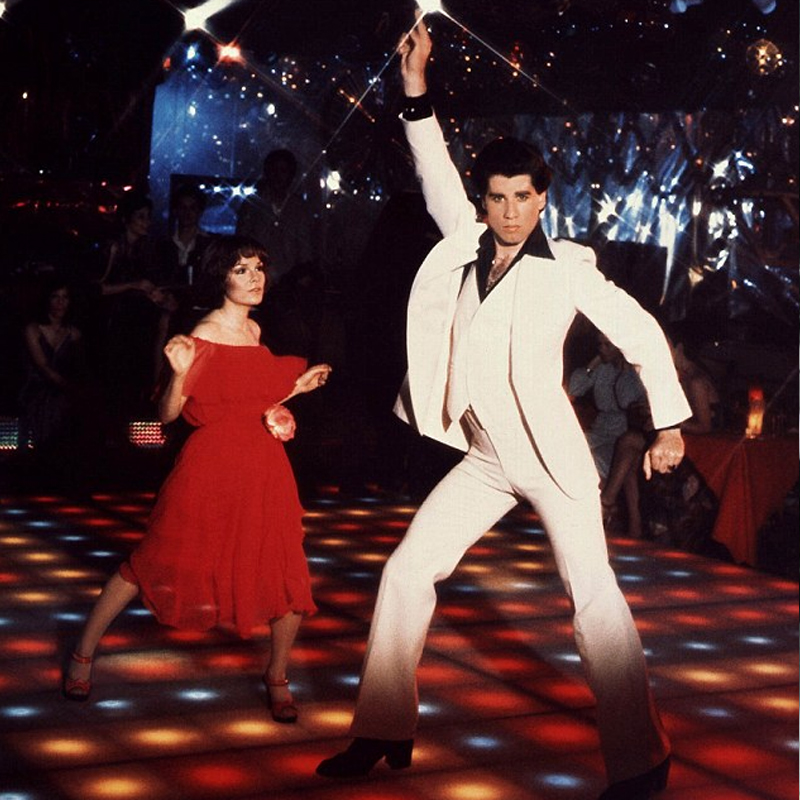
When made into polyester fabric, it can be used to create clothing, furnishings, textiles and more. If you love your clothes, you are probably already aware that if you check their labels, you can see what they are made from. If a natural fabric is mixed with polyester, then you will see the percentages of each on the label.
3. What are some characteristics of polyester fabric?
- Polyester is very durable and is resistant to many chemicals
- This is a popular fabric in the fashion industry, as it is resistant to shrining and stretching. It is also resistant to wrinkling and abrasions
- The fibres used to create Polyester are very strong yet lightweight
- The fibres are easily dyed
- It retains its shape very well
- Polyester fabric is easy to look after and it can be washed and dried at home
- It is a quick drying fabric, so a popular choice for outdoors clothing
4. Why choose polyester?
It is such a popular choice for apparel because polyester fibres are thermoplastic, or heat-sensitive. This means that fabrics, which are 100% polyester, can be given permanent pleats and decorative shapes and patterns can be laser-cut into them. They are also highly stain-resistant, so great for cleaning.
You might notice that when a garment is 100% polyester, that is it prone to static build up. This is a nightmare when it comes to ensuring your hair looks good, and you might find yourself being able to give people static shocks – which, although harmless, can be pretty annoying! To eliminate this issue, polyester is often blended with more stable fibres, such as cotton. This is then known as polycotton and it embodies the benefits of both fabrics; strong, durable, wrinkle resistant and far more breathable than 100% polyester.
Polyester clothing tends to be slippery and almost silky to touch and the fibres can be woven or knitted to create the fabric, although knitted maximises its flexibility. It is a naturally bright fibre and can be modified easily for different uses.
5. What are popular uses?
- Fashion
- Sportswear
- Fleeces
- Coats and anoraks
- Bedding such as sheets, duvet covers and sleeping bags
- Footwear
- Fillings for duvets (due to its insulating properties)
- Sewing threads
- Soft furnishings and upholstery
- Textiles
- Luggage and other bags
Industrial polyester fibres are also used in things like conveyor belt fabrics, seat belts, plastic reinforcements and more.
6. Are there disadvantages in using polyester?
Some people love to only wear or use natural fabrics and yarns, such as cotton, cashmere, silk, wool etc. The benefits to these are they are generally breathable, hypoallergenic, and durable. They can also be more expensive than manmade fibres and need more care in regards to washing and drying.
The main issue regarding synthetic fabrics, such as polyester, is that they don’t breathe. Some find, when wearing it, that they can feel sweaty or have a feeling of humidity, which can be uncomfortable. This is because the moisture absorption of polyester is very low, compared to natural fabrics like cotton. However, modern manufacturing is now starting to create more moisture-wicking polyesters, which are great for work out and leisurewear.
People with very sensitive skin might find that they get a small reaction to wearing synthetic fabrics, however, this is usually not as common when it is a blended fabric.
On its own, it is highly flammable, so care needs to be taken, especially if wearing or using 100% polyester near an open flame.
As polyester is made from plastic, there is the question as to whether it is bad for the environment. True, it does come from an unsustainable source, however, plastic bottles are actually recycled into polyester fabric, which is pretty amazing, but, on the downside, plastic is not compostable, which means it doesn’t break down well in soil.
7. Is it easy to design your own polyester?
With sewing and making your own clothing being hugely popular, it is easier than ever to design your own polyester fabric. At Contrado, you just need to upload in image or your favourite pattern to our design interface. From there you can alter the size, position and repetition of your design, before choosing dimensions and your quantity and placing an order. Start small and try a test print first.
8. So, what’s the bottom line?
It is undeniable that polyester fabric has a huge variety of beneficial uses, in a wide variety of sectors. As with any synthetic material, reactions can occur, but these are vastly limited, especially when polyester is blended with other fibres, such as cotton. Adverse reactions to fabrics and textiles (even natural ones) are always a possibility, but overall, the use of polyester can be extremely beneficial and useful.
Polyester has a lot of stigma, due to the old-fashioned polyester, which was super popular in the 1970’s, but fell from grace thanks to the uncomfortable double-knit polyester fabric. However, modern polyester has come on in leaps and bounds and is now a higher-grade fibre. Technological advances have dramatically improved the feel, drape and look of polyester, so it blends right in with more natural and expensive fabrics. As with all synthetics, it will remain, to an extent, unbreathable, so for anyone who experiences hot flushes, excess body heat or lives in a humid environment, polyester might not be the best fabric option for you.
Modern polyesters can feel and look as beautiful as real silk and wool, but it is all about ensuring you opt for a high-grade version or the right blend. A lot of high end brands use polyester in their collections, mainly to increase durability, ease of care and exciting effects.
It is all about being savvy when it comes to choosing your fabric. Remember, not all polyesters are created equal. Do your research, check labels, and always try on and there is no reason you and polyester can’t be friends.
If you wanna know more about other fabrics and feel the difference, try our Swatch Pack.
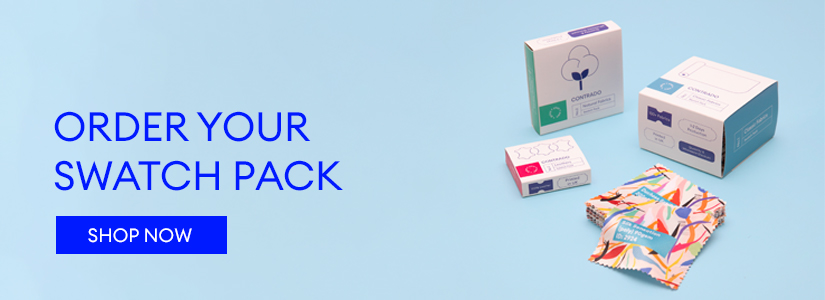

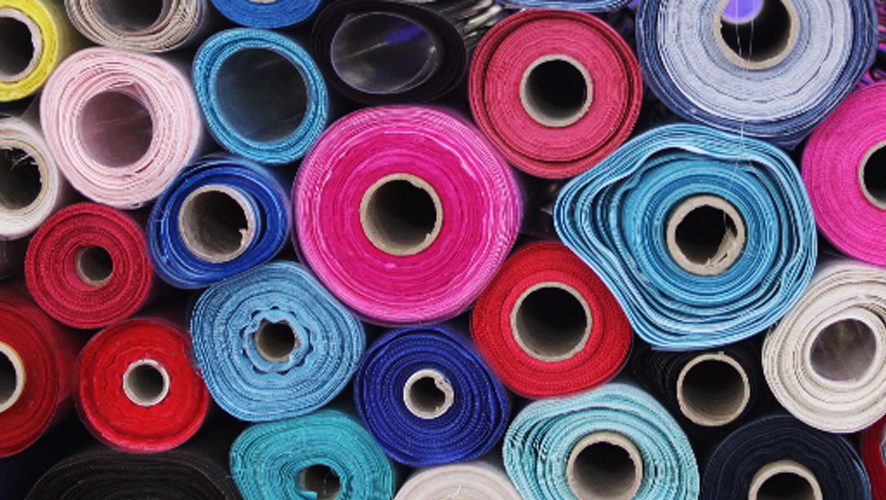
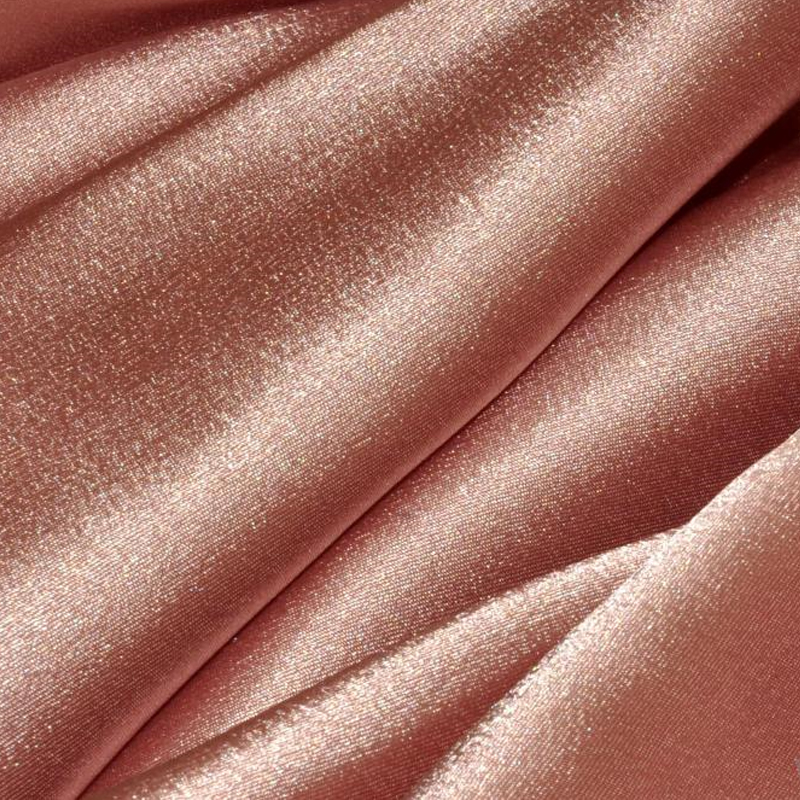
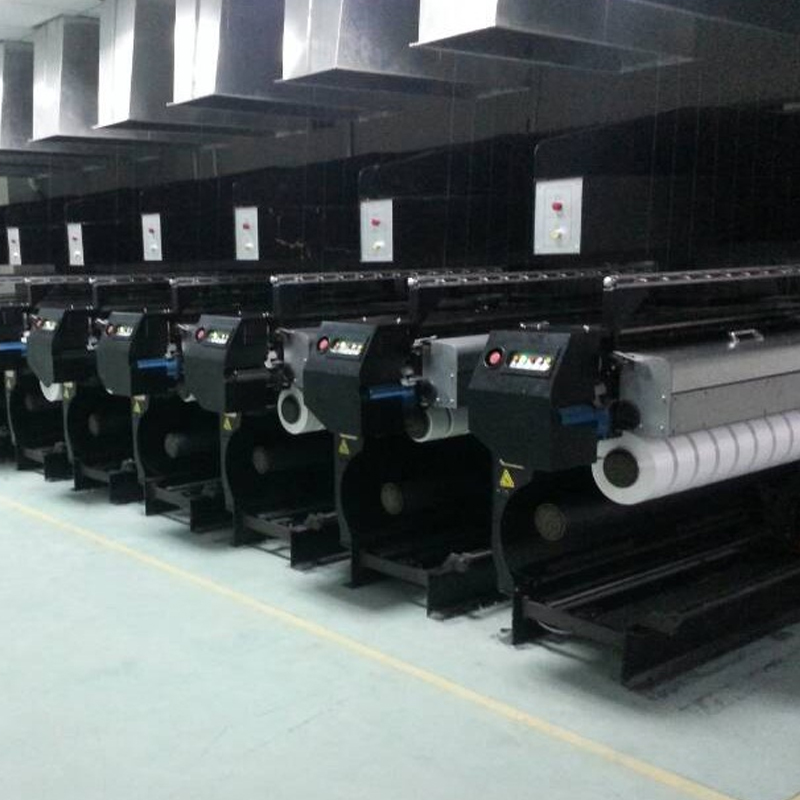
Difficult to remove the stigma of the early polyesters but this has been super informative and will help people realize how very versatile it is as a fabric, thanks! (Just keep away from that flame…)
Hi Ann, thanks so much for your comment and we are very glad you found it informative. We hope you continue to enjoy our posts.
It is known, that every time you wash clothes, it loses some fibers. That’s one of the main reasons for microplastic in the oceans.
So the stigma will stick and it will become more important to spread awareness of the use of plastic.
When polyester is washed, the washwater contains thousands of non-biodegradable microfibers, which usually end up in water bodies and harm marine life.
What would the difference be between 100% polyester, 100% woven polyester and 100% knit polyester?
Thank you
Hi Kathy,
When a label says “100% polyester” it is referring to the fact that the whole product is comprised of polyester. The “knitted” or “woven” element simply refers to the construction of the fabric – whether the fibres have been woven or knitted. I hope that helps 🙂
Claire
does woven polyester crease?
Poly fabrics are often less likely to crease than their natural counterparts, but it isn’t a blanket statement, unfortunately. Some woven polyester will be low-crease or anti-crease, and others will crease relatively easily.
How about using polyester for sofa slipcovers? So many slipcovers are now 100% polyester?
Hi,
This is an amazing article. Can u explain how to mix synthetic fibres into natural fibres. e.g. Terrycott, PolyCotton
Hi Wasim!
We think this is a great question! We’ve scheduled an upcoming post in our ‘What is….’ range to look at this in a little more detail! Check back to see more!
Thank you
Beca
Is polyester unhealthy for our skin?
I am very allergic to polyester in the last two years
It affects my whole life
Clothing in winter especially…cant wear wool either. Nobody makes cotton winter coats. All clothes are polyester with some cotton. Bedding is also a problem. 100% cotton outer but microfiber polyester filling. Most online articles say polyester or other synthetic materials are poisonous and cause cancer. The dyes are also bad for you and the worst is formaldehyde put in clothes to make them soft fluffy or furry. I cant believe our government allow these things to be imported and sold. It’s a travesty.
What’s the best brand of Polyester fabrics, is it the woven or knitted
Woven and knitted aren’t brands, they are types of construction. Neither is necessarily better, but they definitely each have their own characteristics. Woven fabrics often have less stretch than knitted ones, for example, making a woven fabric much better for a tablecloth, but a knitted one better for some stretch leggings.
What is the ideal ratio of wool and polyester for the blended fabricks? My throusers are made of 80% polyester and 20% cotton. Will I feel sweaty in it during hot days?
There is no ideal ratio as it depends on the type of poly fabric as well as the thickness of the wool. For example, you can get a poly lace that is super lightweight and feels like wearing nothing or a poly jersey which is very thick and designed for winter wear. You can also get poly fabrics that are faux leather. Unfortunately, it’s not a simple question to answer and depends on the fabric weight and breathability as to whether or not you’d feel sweaty on hot days.
Hi,
Your article was very informative. However, I wish you’d elaborated on the different ‘types’ of polyester as I used to be one of those ‘hate it’ people, but since learning that the fabric has come a long way since the 1970s, and that there are breathable polyesters, I’m giving it a second look. Therefore, if you can explain the difference between the various polyester options (Interlock, Pique, Hybrid, Micro Mesh, Interwoven & Mesh), their advantages/disadvantages, fabric weight/gsm range, etc. I would be most appreciative.
Thanks in advance.
This was a really informative read. I just googled polyester and your piece was the first thing I read and it concise and easy to understand. Thanks 🙂
is it possible to make polyester from natural fibers (bamboo, grasses, etc) or is it, by definition, made from (essentially) plastics? thanks.
Not polyester itself no, it is, in essence, a man-made product that is made from chemical reactions and essentially plastics. You can get a polycotton blend, or a polygrass blend, which would contain different quantities of both the natural and the poly materials.
Is a mix of polyester and cotton suitable for clothing for a vegan?
Poly fabrics are considered suitable for vegans as they are man-made and thus not from animals or animal byproducts. As cotton is a plant, it is often considered vegan-friendly too. The exception to this could be the process that is involved in actually harvesting and cultivating the cotton which could be considered non-vegan.
Broadly, however, yes, it would be suitable.
Hi would a 100% Polyester jacked be fitting if i want a jacket with patches on
It depends on what you’re looking for. There is no right or wrong answer here. There would be nothing stopping polyester from being suitable for a jacket with patches, but it would depend entirely on the construction, the texture and how it is made up etc.
Do clothes made of polyester shrink when put in a dryer ?
Some do, some don’t. It isn’t necessarily a case of if it is a poly fabric or not – more the construction and properties of each material.
I think you should also include information about the environmental impacts of polyester (and many man made fabrics). Polyester is created using ethylene glycol and terephthalic acid. When creating polyester they use water. The ethylene glycol, and terephthalic acid along with dyes and other chemicals get washed into the waste water. Polyester is made in many developing countries that do not have water protection laws in place and these byproducts wash into the water shed causing contamination. Also, the same qualities that make polyester more durable (it is essentially a plastic) make it so that is non bio-degradable. Given the revolving door of fashion many people discard clothing after wearing items for short periods of time – and even if you donate it because it is out of style they often discard clothing items. Please consider the materials clothing that you purchase and the short and long term effects on the environment.
This was very an interesting thing to read about honestly I would love to learn more.
I’ve heard that man made fabrics like polyester can stick to and burn the skin if the polyester catches fire, Thus causing serious burns whereas if a natural fabric like cotton caught fire it could be easily peeled from the skin causing less damage. I prefer cotton fabric because of my sensitive skin but it can be a mission finding 100% cotton clothes.
It has been suggested we buy polyester clothing for use in Aged Care, because it doesn’t loose its colour like natural fibres when laundering in hot water with bleach (added to ensure hygiene). Drying is done at a high temperature in a commercial clothes dryer. Finding ready made clothes in good quality polyester seems to be very difficult and as others have commented, will have the disadvantage of being hot.
hello can someone explain the mechanical and physical properties of polyester please
thanks
What is the meaning of acrylic fibre and polythene ?
I am a seamstress, but finding ways to change garments isn’t necessarily as difficult as a lot of people think, and a hell of a lot easier – and more ecologically sound – than sewing from scratch. I therefore maintain a wardrobe that satisfies my creative urges, and many moods, for much, much less than I’d spend if I bought new. And when I tire of my designer pieces, there’s always someone else out there who might be interested in buying on eBay, or if not, there are charities that get clothing to third world countries where people in need can make use of them.
Is scubsuit a polyester materials like example katrina fabric use for scrubsuits. Is it water repellent or water resistant? I need to know for my project that the requirement is light fabric , no need for ironing, durable and water resistant fabric
Hi Liza! So Polyester is water-resistant but is not fully waterproof unless coated with special materials. I hope this answered your question, and feel free to contact us if you have any further questions.
I think, along with the fact that it sheds fibres into the water when being washed and it also sheds fibres into the air just by being worn. Any polyester mix, be it cotton, wool whatever – is virtually unrecyclable because you can’t separate the plastic from the cotton / wool. So any polyester mix clothing/fabric will almost certainly end up in landfill when it reaches its end of life.